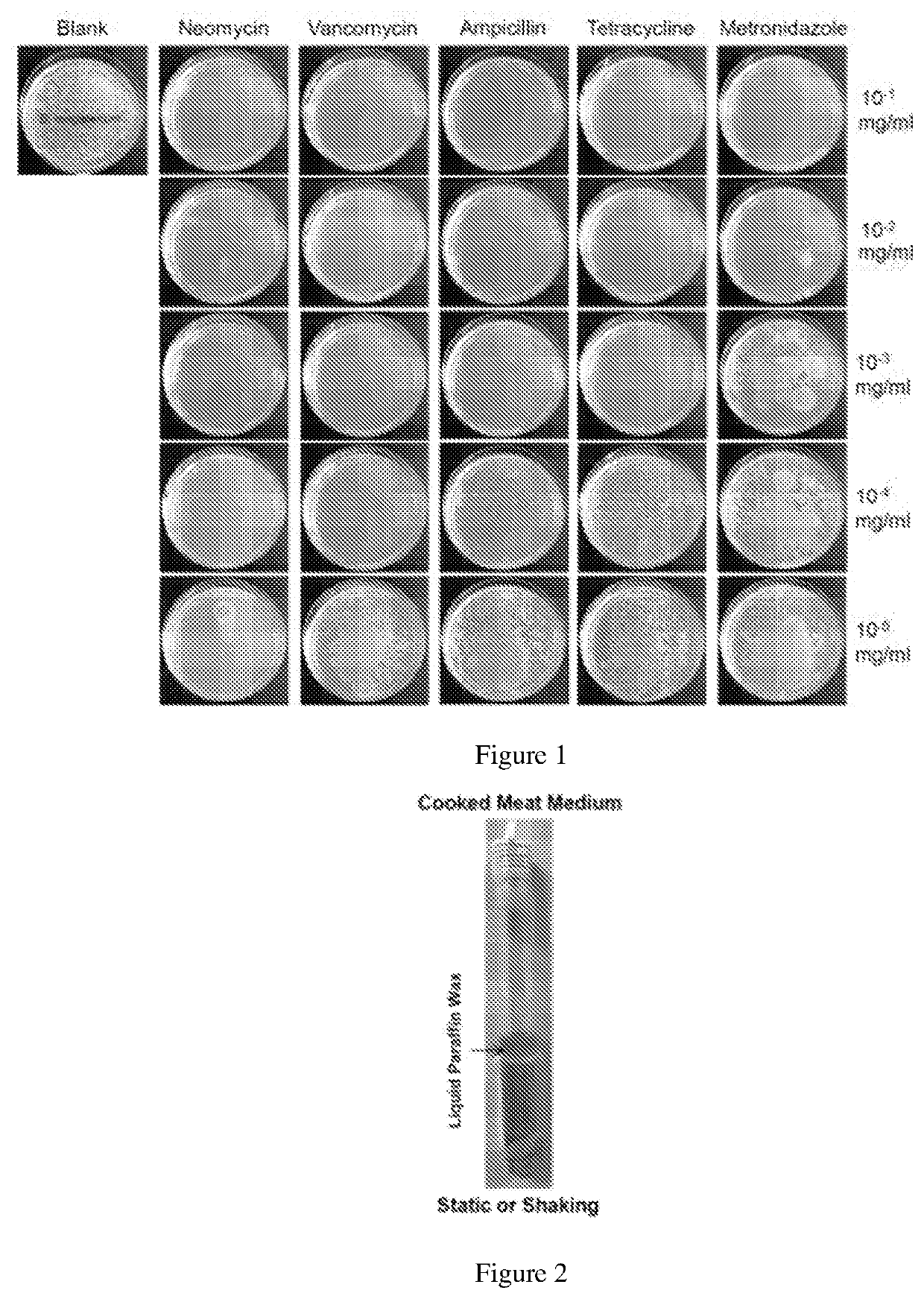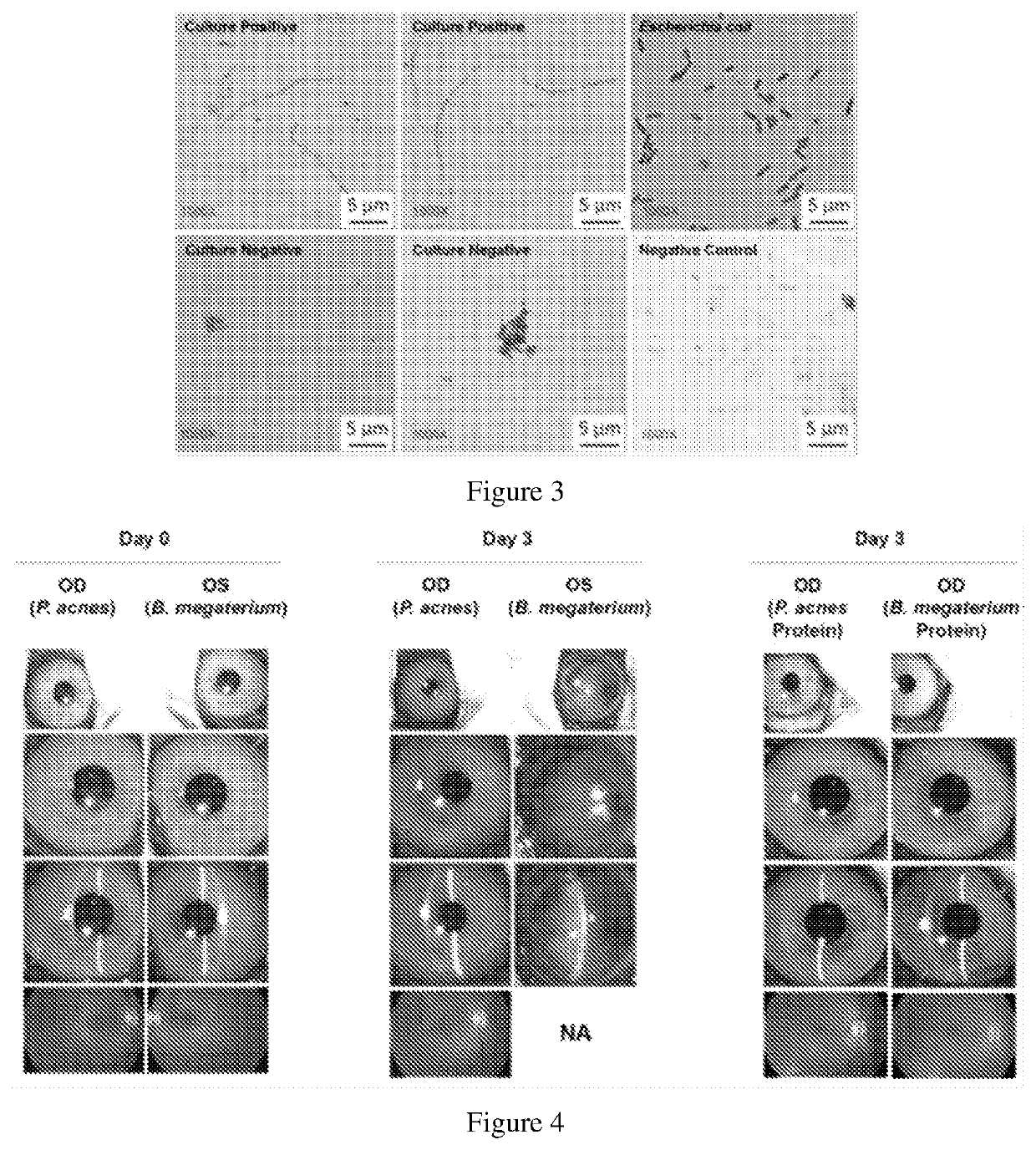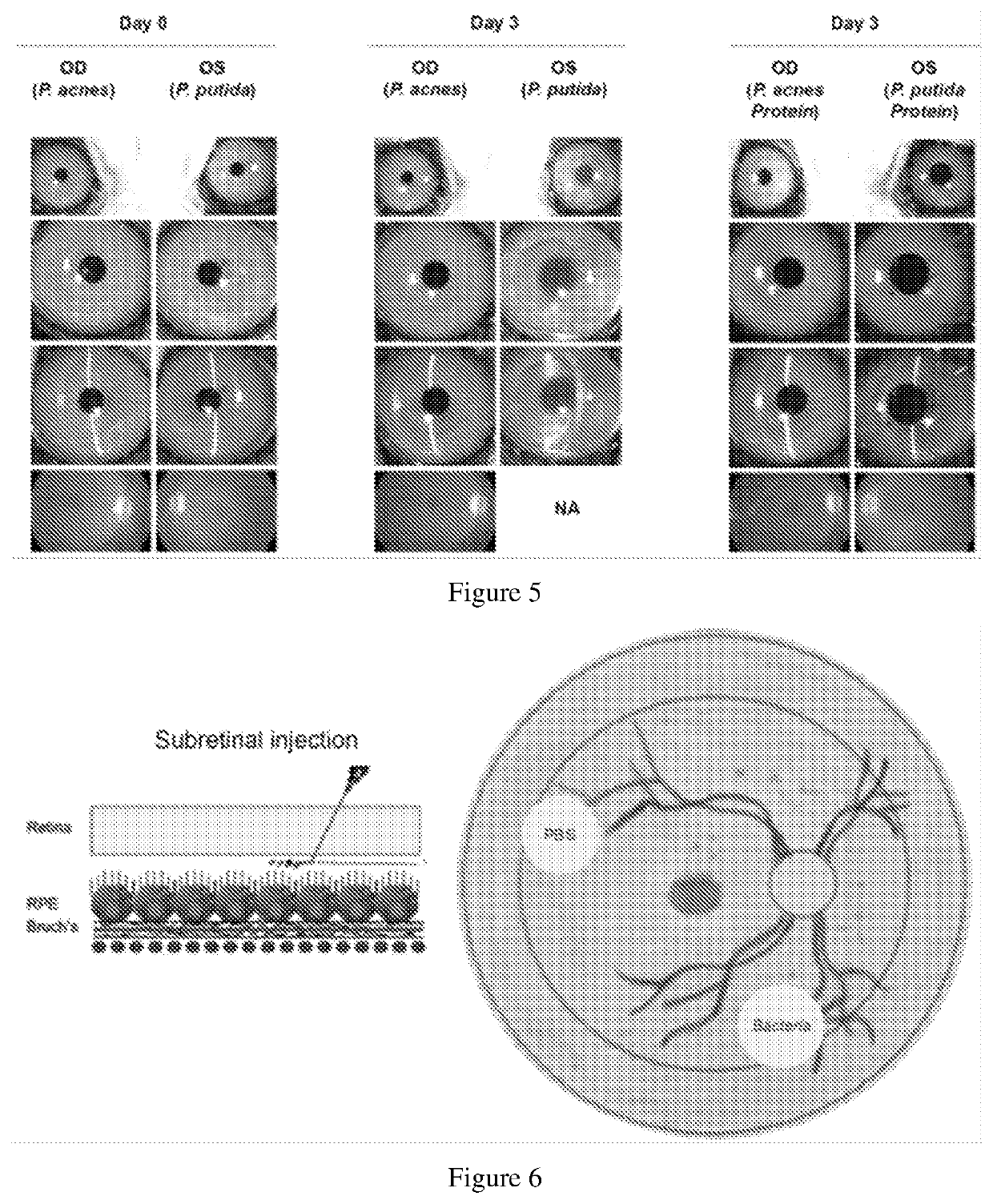Animal models, screening methods, and treatment methods for intraocular diseases or disorders
a technology of intraocular diseases and disorders, applied in the field of eye diseases and treatment, can solve the problems of irreversible vision loss worldwide, eye discomfort or lesions, and very fragile eyes
- Summary
- Abstract
- Description
- Claims
- Application Information
AI Technical Summary
Benefits of technology
Problems solved by technology
Method used
Image
Examples
exemplary embodiments 1-25
[0376]Embodiment 1. A method for establishing a model of intraocular disease or disorder, which method comprises infecting a model carrier with a microorganism.
[0377]Embodiment 2. The method of embodiment 1, wherein the microorganism comprises bacteria, archaeal, protist, fungus, virus, or a combination thereof.
[0378]Embodiment 3. The method of embodiment 1, wherein the model carrier comprises one or more of human, non-human mammal, organs, tissues, tissue sections, tissue extracts, body fluids, body fluid cultures, cells, viruses, enzymes, culture media.
[0379]Embodiment 4. The method of embodiment 2, wherein the microorganism comprises bacteria selected from one or more of the followings: Clostridium, Acinetobacter, Streptococcus, Mannheimia, Fibrobacter, Prevotella, Campylobacter, Actinomyces, Hymenobacter, Escherichia, Tissierella, Klebsiella, Porphyromonas, Azospira, Aquimarina, Achromobacter, Acidithiobacillus, Burkholderia, Marinobacter, Treponema, Actinosporangium, Vibrio, Ru...
example 1
on of Bacterial Culture
[0828]The bacterial culture medium (HuanKai Microbial, Guangzhou, China) containing peptone 5 g, beef extract 3 g, NaCl 5 g, agar 15 g, and MnSO4 5 mg in 1 L ddH2O (pH=7.2) was prepared in conical flask (Drtech, Guangzhou, China) and was sterilized in the autoclave (HIRAYAMA, HEV-50, Japan) at 121° C. for 30 min. Bacillus megaterium (total 1*107 per culture) was cultured in the incubator (HettCube 200, Germany) at 37° C. for 24 h.
example 2
Culture for Drug Screening
[0829]To test whether antibiotics can control the growth of Bacillus megaterium in vitro and in vivo, we first carried out an antibiotic sensitivity screening test in petri dishes which were made in example 1. The sensitivity of Bacillus megaterium to several major antimicrobial agents including ampicillin, vancomycin, neomycin, metronidazole and tetracycline were examined using the minimum inhibitory concentration (MIC) method. Ampicillin, vancomycin, neomycin, metronidazole, and tetracycline (purchased from Sigma, USA) at various concentrations (10−1, 10−2, 10−3, 10−4, 10−5 mg / mL) were added into cooled medium. As shown in FIG. 1 below, Bacillus megaterium was most sensitive to neomycin, while metronidazole was 10000-fold less effective in controlling the growth of Bacillus megaterium.
PUM
| Property | Measurement | Unit |
|---|---|---|
| concentration | aaaaa | aaaaa |
| time | aaaaa | aaaaa |
| chemical structure | aaaaa | aaaaa |
Abstract
Description
Claims
Application Information
 Login to View More
Login to View More - R&D
- Intellectual Property
- Life Sciences
- Materials
- Tech Scout
- Unparalleled Data Quality
- Higher Quality Content
- 60% Fewer Hallucinations
Browse by: Latest US Patents, China's latest patents, Technical Efficacy Thesaurus, Application Domain, Technology Topic, Popular Technical Reports.
© 2025 PatSnap. All rights reserved.Legal|Privacy policy|Modern Slavery Act Transparency Statement|Sitemap|About US| Contact US: help@patsnap.com



